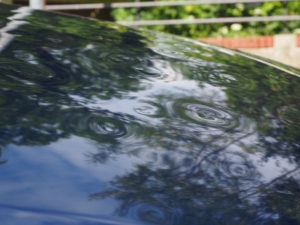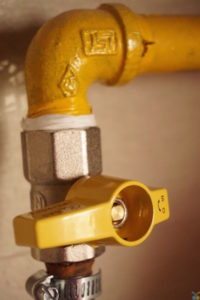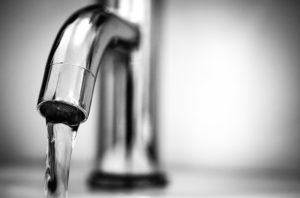VIEW OUR COMMERCIAL
As seen on TV

CHOOSE THE EASY OPTION FOR YOUR INSURANCE, WE’LL GET YOU A QUOTE IN NO TIME AT ALL.
LATEST NEWS
Storm damage. Fire. Theft. They are all devastating emotionally, and are not particularly kind to your wallet, either. The latest estimate from the Crime Survey for England and Wales showed an 8% increase in theft compared with the previous year. Extreme weather has become more commonplace in the UK, and a whopping £7.8million is paid out every day by home insurers.
The right home insurance can protect you and your family financially from everything that can go wrong. While we all like to get the best price deal on insurance, it’s also important not to skimp on cover. If you do, you could find it costing you a lot more in the long run. That’s why we’ve put together this Easy2 understand Home Insurance Checklist, to help you to decide what you need from your home insurance.
First, understand the difference between buildings and contents insurance
There are two main types of insurance for your home:
- Buildings insurance covers the structure of your building against damage. For example, if there is a fire or flood, this insurance will pay for your home to be repaired or rebuilt. If you own your home with a mortgage it is likely to be a condition of your mortgage that you have buildings insurance. If you rent your property, your landlord will be responsible for buildings insurance so you will not need to take out a policy.
- Contents insurance protects the items in your home, including (in some cases) property kept in sheds and garages. Your contents are protected against damage caused by fire, flood etc., as well as theft.
You can buy buildings and contents insurance separately, but if you need them both then it’s often more cost effective to buy them together as a bundle.
Buildings insurance checklist
- Is your home listed or made from an unusual material? If so, you’ll need to declare this and may need a specialist policy. Failure to tell your insurer this information could invalidate your policy.
- What is the upper limit your policy will pay out? Is this enough to cover rebuilding your property if it’s damaged? The rebuilding cost is not the same as the value of your house (it could be a lot more or less!) If you’re not sure how much it will cost to rebuild your house, ask a surveyor.
- Does your policy provide alternative accommodation if your home is left uninhabitable? This is often excluded from cheaper home insurance policies but could leave you severely out of pocket if you are unable to stay with friends or family during repair works.
- Is your home in a high flood risk area? If so, are you covered by your insurance?
- Are outbuildings, like your shed or garage, covered by your buildings insurance policy?
Contents insurance checklist
One of the biggest mistakes people can make is undervaluing the contents in their home. When you’re working out your value of contents, don’t forget even the smallest items, like replacement cutlery and bed sheets. It can help to write down all the rooms in your home and then go through listing an approximate cost to replace everything.
- Does your policy provide a new for old replacement? Some policies will pay out for a replacement item of the same age and condition. If you want any replacements to be brand new, make sure that is offered by your insurer.
- If you have high-value items like jewellery and watches, check the upper limit for single items on your policy. Depending on their value, some items may need to be specified. Some jewellery and watches have shot up in value in recent years, so get an up-to-date valuation. Find out if there are any special conditions set, such as the item is only covered while being worn or when stored in a safe.
- Is accidental damage included? If you have accidental cover, you can make a claim for a replacement even if the damage is caused by accident, for example, your dog jumps up at the TV, knocking it over and smashing it. For example, if you have got pets or children it can be a prudent add-on.
- If you regularly travel, are your items covered abroad?
- Are contents in outbuildings, like the shed or garage covered? Expensive items such as bikes may need to be specified separately. Check your policy to ensure you have the level of cover you need.
It’s Easy2Insure your home
Our specialist team makes it Easy2Insure your home with confidence. As an independent insurance broker, we’ll shop around some of the UK’s most trusted names in insurance to get you the best deals. We’ll negotiate a great price deal on your behalf making sure there are no nasty surprises in the small print. Call us on 0800 9179522 or get a free quote.
In the UK we’ve been told to brace ourselves for more extreme weather conditions. And means more potential travel misery. Summer temperatures turn up the heat to melt our roads, while flash floods and blizzards can bring the country to a halt overnight. Inconvenient: yes. But can red weather warnings also impact on your wallet by invalidating your car insurance? We investigate if you are safe to hit the road when there’s a red weather warning out:
What is a red weather warning?
In the UK, the Met Office issues official warnings to the public if the forecast weather could impact on travel and everyday life. The sorts of weather conditions that can lead to weather warnings are:
- Rain
- Thunderstorms
- Wind
- Snow
- Lightning
- Ice
- Fog
- Snow
Weather warnings come in three categories: yellow, amber, and red. A red warning is the most serious category, with a potential to seriously disrupt travel and day-to-day life. A red warning is considered to pose a danger to life and means there’s a high likelihood of damage occurring to buildings.
How common are red weather warnings?
Red weather warnings are reserved for the most seriously dangerous weather. There have been 10 red weather warnings since the system was introduced seven years ago.
Can I drive in a red weather warning?
Yes. The official advice is to only drive during a red weather warning if the journey is absolutely necessary. That’s because a red weather warning means there is a high likelihood of disruption to roads and travel and conditions are likely to be very hazardous. While you’re being advised to stay at home, there is no requirement that you do so.
Will my car insurance cover me if I have an accident during a red weather warning?
In almost every case, your car insurance will cover you if you have an accident when a red weather warning has been issued. For complete peace of mind, double check the small print or speak to your broker or insurer.
There’s also a big BUT.
Your car insurance will cover you if you drive during a red weather warning as long as you are considered to be driving with care. If you have an accident and your insurance company suspects your driving was dangerous they could refuse your claim. That means you may need to adjust your driving style to match the weather conditions. Take extra care and slow down, especially at roundabouts, junctions, and traffic signals.
Other things to think about to make sure your insurance is not voided in cold weather
If a weather warning has been issued for cold and ice, you’ll probably need to defrost your windscreen. It can be tempting to nip out to the car, turn it on to start defrosting, and then head back into the warm. But beware: your insurance company will not pay out if your car is stolen while the engine is on and you are not with your car.
Staying safe in extreme weather
While your insurance should cover you if a red weather warning is issued, it is a good idea to take a few extra precautions if you are heading out. These can help to prevent an accident from occurring and keep you safer if the weather does catch you out:
- Check your tyres. Make sure you have plenty of tread for maximum grip on icy or wet surfaces. Check the pressure too, as over or under-inflated tyres increase your stopping distance significantly.
- Put an emergency kit in your car if very cold weather is forecast. You should include a shovel (to dig your car out if it gets stuck in a snow drift), and extra warm clothes and blankets. Pack water and food too, in case you are trapped in your car overnight.
- Make sure your screen wash is topped up (and not frozen). Salted roads get very mucky and it can become difficult to see clearly to drive if your washers are not working properly.
Buy great value car insurance
Whatever the weather, you can be sure of a great value deal on car insurance when you get in touch with our friendly team at Easy2Insure. We are an independent insurance broker, so we shop around the UK’s best insurance companies to negotiate the cheapest deal on your behalf.
We offer competitive quotes for drivers of all ages and all cars, including classic cars and modified cars. For complete peace of mind, ask us to include breakdown cover in your quote, so you know help will be on its way if something does go wrong on the road. Call us on 0800 917 9522 or get a quote.
Cars are getting bigger, parking spaces are getting smaller, and distracted drivers are everywhere. This all adds up to more bumps and dings when your vehicle is parked. Sometimes you’ll find a note and contact details. But more often than not, you won’t. A whopping 1-in-5 drivers admit to hitting a parked car and driving off. If you’ve come back to your car to discover a new scratch down the side or a ding in the bumper, and no culprit in sight, you may feel resigned to putting up with the damage or forking out for the repair bill yourself. But this is where scratch and dent insurance, also known as cosmetic car insurance, could make a difference. We look at what scratch and dent insurance covers and why you might need it. That way you can decide if it’s the right choice for you.
-
First, what is scratch and dent insurance?
Scratch and dent insurance is typically purchased in addition to your standard car insurance. It’s specifically designed to cover you for putting good any purely cosmetic damage that occurs to your vehicle, typically when other drivers bash into you at low speed.
-
What does scratch and dent insurance cover?
Scratch and dent insurance covers minor damage to your vehicle. This is things like small dents and scratches and chips. This damage will only affect the cosmetic look of your car but can be annoyingly expensive to put right. Scratch and dent insurance is not designed to be used for fixing more substantial damage.
-
Are you the sort of person who cares about the way your car looks?
For many of us, our car is not solely a way to get from a to b. It’s a status symbol, so we don’t want it to look battered and bashed. If you couldn’t care less if your car has had a cosmetic bash, then scratch and dent insurance is not something you’ll need. But if you do care, and wouldn’t be seen dead in a motor with dents down the side, then it is worth considering as it can save you money.
-
Do you have your car through a PCP (Personal Contract Purchase) or PCH (Personal Contract Hire)?
If you have your car through a PCP or PCH, you’re expected to keep it in good condition. Scratches and dents can mean you’re penalised at the end of the contract. If you’re worried about finding a large sum of money to put damage right, cosmetic car insurance is worth considering.
-
Next, do you have a high excess on your car insurance?
You can always claim for dents and scratches on your standard car insurance. But if you have opted for a high excess, this option can be unaffordable. In that’s you, it’s worth considering scratch and dent insurance. For example, the excess on scratch and dent insurance usually ranges from £0-£50, ensuring it’s affordable to get your car sorted.
-
Do you pay more than average for your policy?
A good scratch and dent insurance policy won’t affect your no-claims bonus. That means you can get perfect paintwork while still holding that precious no claim discount that can help keep your car insurance more affordable.
-
Do you park in public car parks, like at work or a supermarket? Or do you park in the street?
If you park in the street or any other public space, your car is at risk of being hit.
-
Is your car already damaged?
In most cases, your car will need to be in good condition with no existing damage if you want to take out scratch and dent insurance. Some insurers will also specify a maximum age or mileage for the car.
-
Finally, has your car been modified?
If you’ve modified your car with a wrap or body panels, discuss this with your insurance broker first. Scratch and dent insurance may not cover you.
It’s Easy2find cheap scratch and dent insurance
At Easy2Insure our friendly team will search through all the options to find you the right scratch and dent insurance to suit your budget and needs. From supercars to family runarounds, we’ll find you coverage for your peace of mind. Call our helpful team on 0800 9179522 or get a free quote today.
Burst pipes are one of the damaging home emergencies you can face. Costly and messy, burst pipes = stress and inconvenience. Fixing the leak is just the start. Finding the location of the leak in the first place can take a long time and a lot of digging. And that means costs quickly stack up. Then putting right water damage to your home, and reinstating floors and pathways, can cost £thousands. With extreme weather, like the Beast from the East, becoming more common and widespread across the UK, burst pipes are something we all need to prepare for. So we’ve put together this Easy2read guide with 12 ways to protect your home this winter.
First, understand what causes burst pipes in cold weather
In the wintertime, when temperatures fall, the water pipes in your home are at risk of freezing. When water freezes, it expands. If it freezes within the confines of a pipe, it can cause the pipe to crack. When the ice thaws, water can then escape from the hole or holes that have been made.
How cold does it have to be for pipes to burst?
Water starts to freeze when it reaches 0 degrees centigrade. Prolonged periods of cold weather or extremely low temperatures put your pipework at risk of freezing.
How can I prevent water pipes bursting in cold weather?
Luckily, there are a number of steps you can take to help reduce the risk of frozen pipes this winter and minimise damage.
- Lofts are unheated and a prime location for frozen pipes. If you have a water tank in your loft, take care to insulate it well. Insulation can be purchased from most DIY stores and helps to protect the pipe from cold temperatures.
- Don’t forget to insulate the water pipes feeding into and out of your water tank to help stop them from freezing. Take care to make sure there are no gaps in the insulation.
- Even if you don’t have a water tank in your loft (for example you have a combi-boiler), you may still have water pipes running through your loft. Check for them and insulate as necessary.
- If you do have a tank or pipes in the loft, it might be worth opening up any hatches during very cold weather. This will allow heat to rise into the roof space. It may increase your heating bills, but it could help prevent frozen pipes.
- Garages are another cold spot in your home. Check for pipes running along the wall or roof of your garage and ensure they are adequately insulated.
- Again, in freezing weather, consider using portable heating to increase the temperature in this space.
More tips to stop pipes freezing
- Pipes can also burst in other parts of your home. Check windows and doors for draughts that let cold air in, especially in parts of your home with no heating.
- Temperatures can plummet in empty properties, so if you go away, set your heating to low. If you can’t do that, ask a neighbour to pop in and put the heating on regularly.
- If the property will be left empty for a long time, consider turning off the water at the stopcock. You’ll also need to drain the system, so there is no water standing in the pipes. You can do this by opening all the taps and letting the water drain away.
- It’s not just piping bringing water into your home that can burst. Pipes taking it away can be damaged too. If you have a dripping tap, get it fixed. Otherwise, that water could freeze resulting in damage.
- Know where your stopcock is. If you have a leak or suspect a pipe has frozen, you’ll want to stop water flowing through the pipes as soon as you can to minimise water damage in your home. If you know where your stopcock is, you can turn off the water straight away. As a general rule, turning them in a clockwise direction closes stopcocks.
- If you think a pipe has frozen try to warm it up gently. You could use a hairdryer on a low-heat setting but don’t use a high setting or a blowtorch. If you do, the extreme changes in temperature could cause more damage to the pipe.
Can pipes burst in warm weather?
Water pipes can burst for a number of reasons, and it’s not just limited to the wintertime. Plastic pipework used in the 1970s has a limited lifespan and can degrade over time resulting in small holes that can get bigger under water pressure. If you’ve got older metal pipes, these can corrode over time resulting in holes. Pipes can also burst thanks to DIY accidents. For example, you put a nail through a water pipe when putting a picture up on your wall.
How big a problem is a burst pipe?
Water is supplied to your home under pressure. That means that if a pipe bursts, up to 400l an hour can leak into your home. The average bath holds 200l, so this is a substantial quantity. It can cause significant damage to the structure of your home as well as contents and furnishings.
Insurance for water leaks in your home
The cost of finding, fixing and making good a water leak can be £thousands. But many ordinary home insurance policies won’t cover everything if you have a water leak. For complete peace of mind, take out home emergency insurance cover. These are designed to take away the cost and stress of emergencies in your home, including mains service supply, plumbing and drains, home security, lost keys and primary heating. You could even opt for a policy that includes boiler insurance.
Home emergency cover can be purchased separately to your standard home insurance and can vary in price. Ask the experts at Easy2Insure to find the most competitive price, with no compromise on cover, for you. Call us free on 0800 9179522 or get in touch.


















